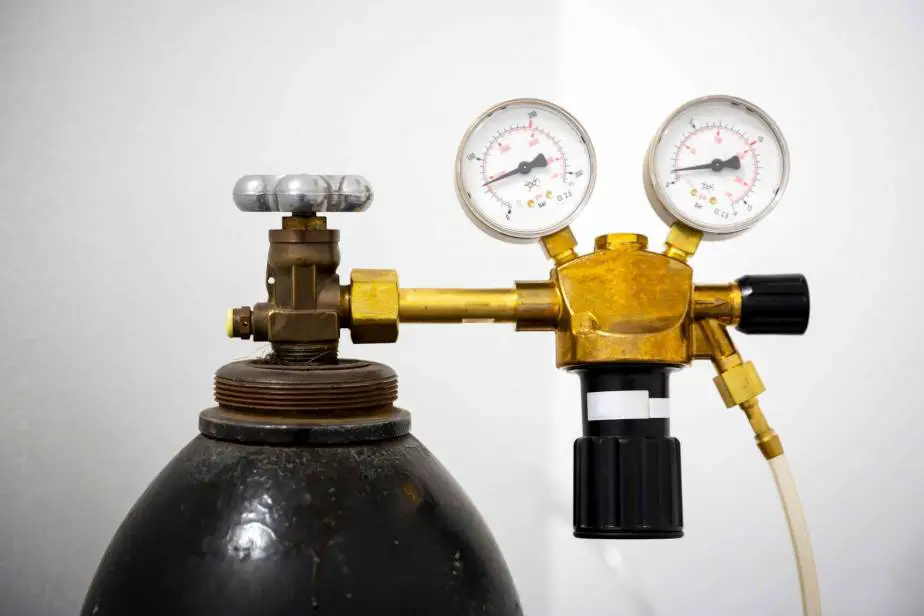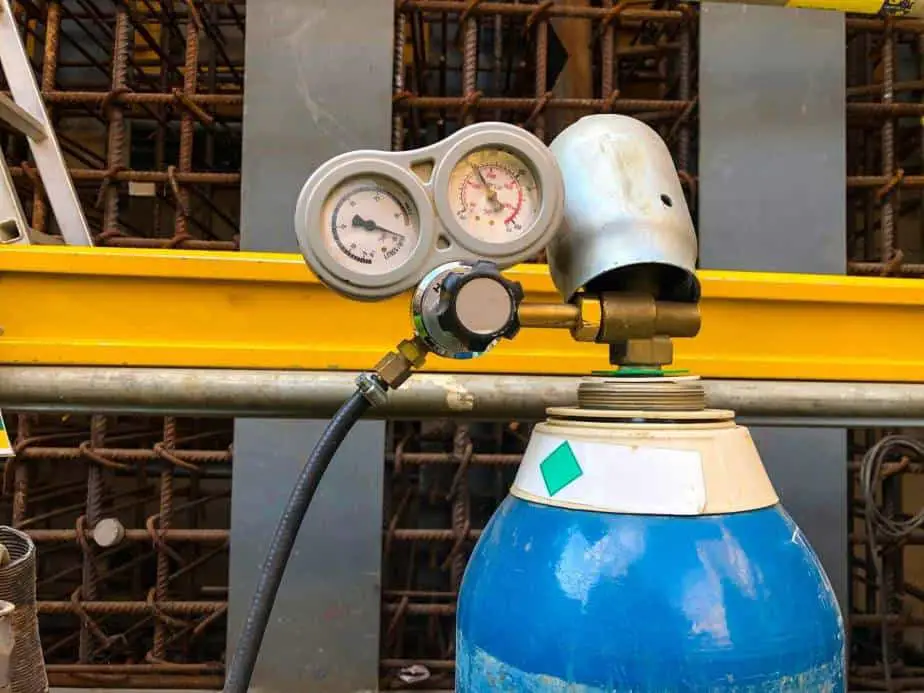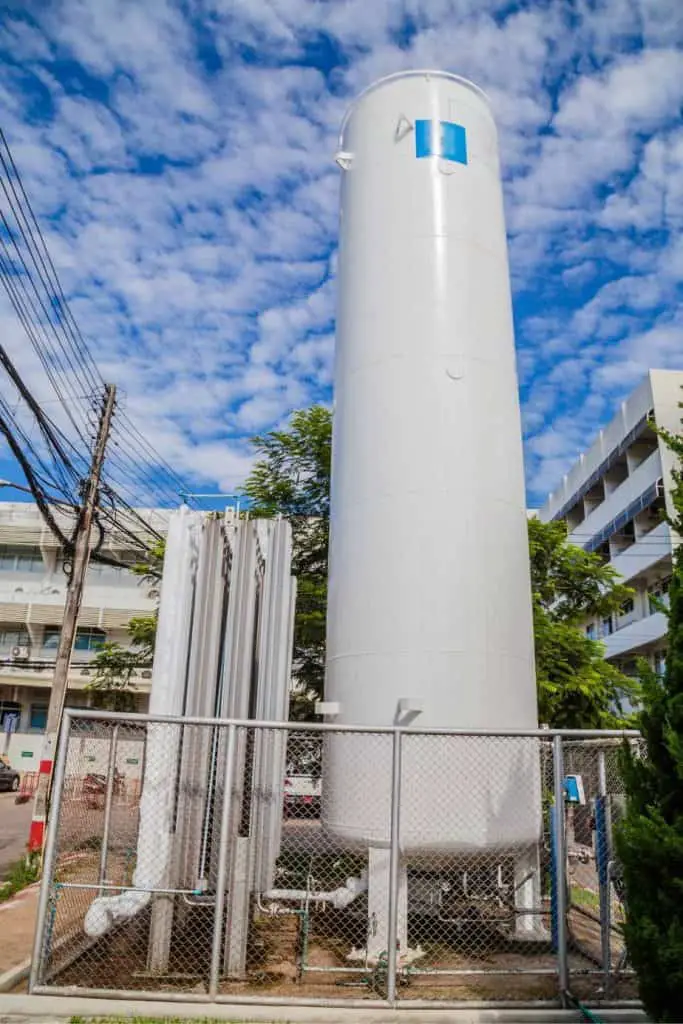This post contains affiliate links to products, services, or education. We may receive a commission for purchases made through links.
Welding is considered by many a technique and artform for enthusiasts and professionals alike. More than 30 different types of welding exist, however, two are considered the most popular: MIG and TIG welding. These two forms of welding utilize different types of gas depending on the material you are working on and the finish you desire
Can You Use the Same Gas for MIG and TIG? No, you should not use the same gas for MIG and TIG, unless you would like to damage your weld or your end product. MIG welds are best with mixtures of gas while TIG should only use pure inert gas’.
Below are guidelines on what to know of the TIG and MIG, and how to best utilize these tools for maximum success. By understanding each process deeply, you will learn which process and gas best suites your needs.

Why You Should Not Use the Same Gas for MIG and TIG Welding
In welding, there is no such thing as a single welding process. All methods depend on the type of weld you use, the material being welded and the result you intend to go for.
Furthermore, depending on the process you choose, it is recommended that you should not use the same gas for both MIG and TIG welding. You cannot use the same gas because:
- Using pure inert gas for MIG welding could compromise the finished weld
- Semi-inert gas can cause a damaging effect on TIG weld
- TIG welding tolerates very few gases
What gas do you use with TIG welding?
TIG welding typically utilizes very few types of gases. While MIG welding uses more mixture of inert and active gases, TIG welding uses mostly inert gas. Below are the gases typically used by TIG:
- Pure Argon
- Helium
- Hydrogen
Pure Argon Gas

Pure Argon gas is the most popular and widely used shielding gas for TIG welding. Argon gas gives TIG welding the ability to weld on every type of metal which includes:
- Aluminum
- Stainless Steel
- Low Carbon Mild Steel
- Titanium
- Copper
Pure Argon is capable of giving arc stability and requires less cleaning action as the arc is narrow and precise. Therefore, pure Argon gives your TIG welding capabilities the accuracy and precision it needs without bead rollover effects. Also, Argon will produce a weld with a brighter, and cleaner surface appearance on the material you are working on.
Helium
Helium is another type of gas that is widely used for TIG welding. Pure Helium or a Helium-based gas mix (Usually 90% Helium + 10% Argon) is used primarily with direct current electrode negative (DCEN). In technical terms, DCEN is used when the electrode lead is connected to the negative terminal, while the work is connected to the positive terminal.
A combination of 50% Argon and 50% Helium allows hotter welds which can create a higher temperature heat profile and increase heat conduction. The mix is used during specialized work because of the added heat. In addition, gas mixes are always a risk with TIG. Pay close attention to the wield to make sure you are not burning through the metal.
Hydrogen
Hydrogen is sometimes used in cases where you might need to increase the heat input while welding. Hydrogen is capable of creating a broader and hotter bead that penetrates deeper into the metal you are working on. Hydrogen is especially useful when you need to work with stainless steel.
Can Argon gas be used for MIG welding?
Technically speaking, yes, however, it is recommended not to use Argon in its purest form. Argon is best used with other mixtures when using MIG weld. The good thing about MIG welding is that it is open to more options when it comes to the type of shielding gases used. These include shielding gases such as:
- Oxygen
- Carbon Dioxide
- Helium
- Argon
In addition, MIG wielding is capable of using both inert and active gases. For example, Oxygen is an active gas, and Argon is an inert gas. Depending on the type of steel you are welding, the MIG welding offers a plentiful option of gas to use.
Argon
Argon is capable of producing a narrower penetration profile. Therefore, Argon comes in handy for tasks such as fillet or butt welds.
Metals such as aluminum, magnesium, or titanium, would need pure Argon. For most other MIG welding jobs, pure Argon is not the preferred choice.
Also, a combination of Argon and Carbon Dioxide is popular as well for many weld jobs. The ratio of the mixture is usually 75% – 95% Argon, and 5% – 25% percent Carbon Dioxide. The mix is capable of:
- Producing Better Weld Quality
- Reduce Post-Weld Clean Up
- Improved Arc Stability
- Puddle Control
- Reduced spatter
- Higher Productivity Rates
Carbon Dioxide (CO2)
Carbon Dioxide is probably the most common reactive gas used by many for MIG welding. CO2 is also the least expensive out of all the shielding gas listed, making it the primary choice when it comes in to play. Pure CO2 is capable of providing very deep weld penetration, incredibly useful for welding thick metals.
However, CO2 has a downside. MIG welding with CO2 will cause less stability of an arc and more spatter if it is not mixed with other gases. Therefore, you should think about what mix works best on certain metals or jobs.
Oxygen

Oxygen is often used in low amounts, as it is capable of improving penetration and fluidity of the weld pool. However, using Oxygen has its drawbacks as it is the main cause of oxidation. Therefore, Oxygen is only recommended to be used with a few types of metals, including:
- Stainless Steel
- Mild Carbon
- Low Alloy
However, Oxygen does cause oxidation of the weld metal. Therefore, it is not recommended to use on metals such as aluminum, magnesium, and copper.
Helium
Helium, similar to pure Argon, is an effective gas to work on non-ferrous metals, and stainless steel. Helium helps in increasing power on arc burns. However, this also means that you will need to use more Argon, which costs more.
Helium is often used in a combination with Argon to work on non-ferrous materials. In addition, this gas mixture can work with much stronger and thicker metals. The ratio of those two gas’ depends on what result you are looking for.
Stainless steel, however, is a different matter. To work on stainless steel with Helium, you need to add CO2 into the mix. This will help to stabilize the arc and improve fluidity.
Can you TIG weld with mixed gas?
Using mixed gas for TIG is not recommended. This is due to the tungsten electrode which will burn out instantly. TIG welding needs pure Argon to protect the tungsten electrode therefore anything but pure Argon is not the best gas to use for TIG welding. TIG welding mainly requires inert gas for a clean finish.
In addition, if an inert gas is used solely for MIG welding, it could negatively impact the appearance of your finished weld. MIG welding works best on a mixture gas such as 75% Argon and 25% Carbon Dioxide to get the most on weld penetration and flow.
Can you TIG weld without gas?
TIG welding without gas is possible, with the help of modern welding units. However, it is highly recommended to use gas to TIG weld. Any processes without the use of a shielding gas need an alternative such as flux or coatings that act as a shielding material. In addition, modern welding units have multi-processing options that can help as well.
Can you MIG weld without gas?
The short answer is yes you can. MIG weld without the use of gas because is the same thing as a flux core wire welder (more or less, the same thing). Flux core refers to the type of wire that the machine uses to operate. When you install the flux core wire in the machine, then you can use it immediately.
MIG welds are known to be very beginner friendly. These are popular for people who are just starting to wield for the first time or just in need of practice. In addition, MIG welds without gas are great for beginner welders because:
- You do not have to buy a gas cylinder to start welding
- You can immediately start welding as soon as you install a new wire welder
